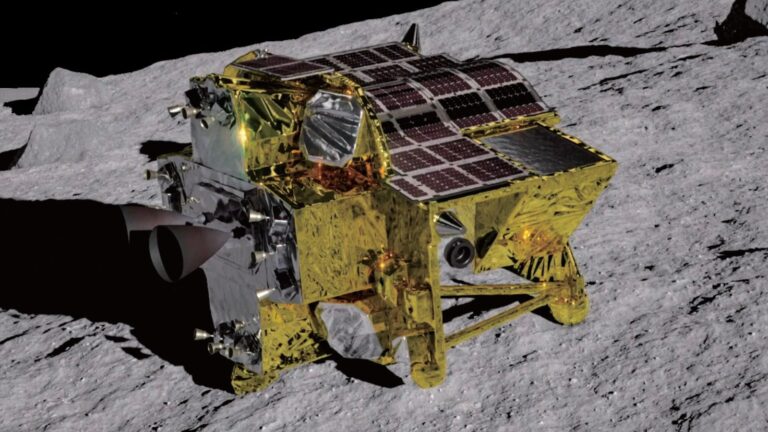The mission has resumed because some light has reached the probe’s solar panels.
The Japanese SLIM lunar lander has regained consciousness. After being turned off for a few days in order to conserve power, the solar panels on the probe have finally been exposed to sunlight. The batteries have been sufficiently recharged to enable regular operations, or at least as normal as anything that can be considered normal for an upside-down lander. SLIM has officially resumed the science portion of its mission, according to an announcement made by the Japan Aerospace Exploration Agency (JAXA).
Despite the fact that Japan is only the fifth country in the world to successfully perform a soft landing on the Moon, there is no doubt that the SLIM (Smart Lander for Investigating Moon) landing might have been executed with a little more ease. The mission, which was later given the nickname “Moon Sniper,” was constructed using a ground-breaking precise landing mechanism. SLIM was able to do a comparison between the features it observed and a map of the lunar surface as it slowly travelled over the Moon. The result was that it was able to pinpoint its location in a matter of seconds.
According to JAXA, SLIM is said to have landed within 55 metres (180 feet) of the initial target position. It landed within a few metres of the updated zone after performing an obstacle avoidance manoeuvre while it was in the process of descending it. On the other hand, the vehicle was able to pitch forward because of an engine failure that occurred in the final moments. The solar panels were initially positioned in such a way that they were facing away from the sun. As a result, the Japan Aerospace Exploration Agency (JAXA) decided to put the lander to sleep in the hope that it would power up at a later time.
It was projected by the researchers that the probe might become active as the angle of sunlight on the Moon continued to shift, and this is exactly what occurred over the course of the weekend. As soon as the team arrived, they immediately began gathering information using the Multi-Band Camera (MBC). The first new photograph, which can be seen below, is blurry, but the Japan Aerospace Exploration Agency (JAXA) claims that it shows a little rock that has been given the name “toy poodle” and that it plans to investigate in greater detail. SLIM was able to land down in a region of Shioli crater that scientists believe may have been exposed to the Moon’s crust as a result of the collision that caused the crater. This was made possible by the great precision of the SLIM spacecraft.
Communication with SLIM was successfully established last night, and operations resumed! Science observations were immediately started with the MBC, and we obtained first light for the 10-band observation. This figure shows the “toy poodle” observed in the multi-band observation. pic.twitter.com/WYD4NlYDaG
— 小型月着陸実証機SLIM (@SLIM_JAXA) January 29, 2024
During the time that humanity has been struggling to return to the Moon, both public and private spaceflight operators around the world have had a number of failures. A fuel leak caused the Astrobotic Peregrine lander, which was supported by NASA, to have to abort its landing recently. The Luna-25 mission, which was launched by Russia, was destroyed in a crash last summer. In light of this, the precision landing capabilities of SLIM made it a welcome success even before this latest improvement.
It’s possible that SLIM’s recuperation won’t last long. According to the Japan Aerospace Exploration Agency (JAXA), the lander was not intended to endure the lunar night, which causes temperatures to drop by two weeks. This process will start later this week, which will result in the probe’s batteries being depleted once more. Therefore, it is possible that JAXA will only have a few days to collect data on rocks in the vicinity before SLIM is permanently shut down.

